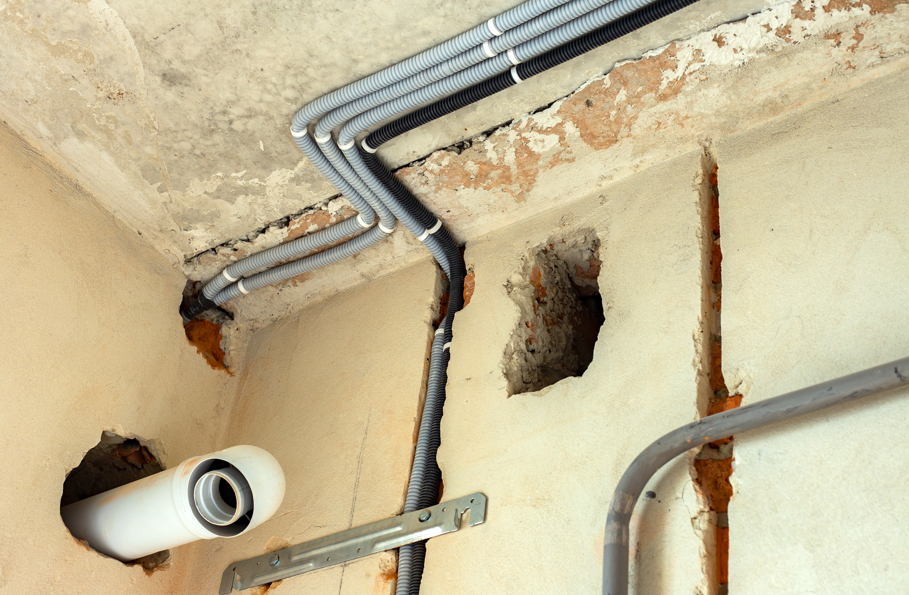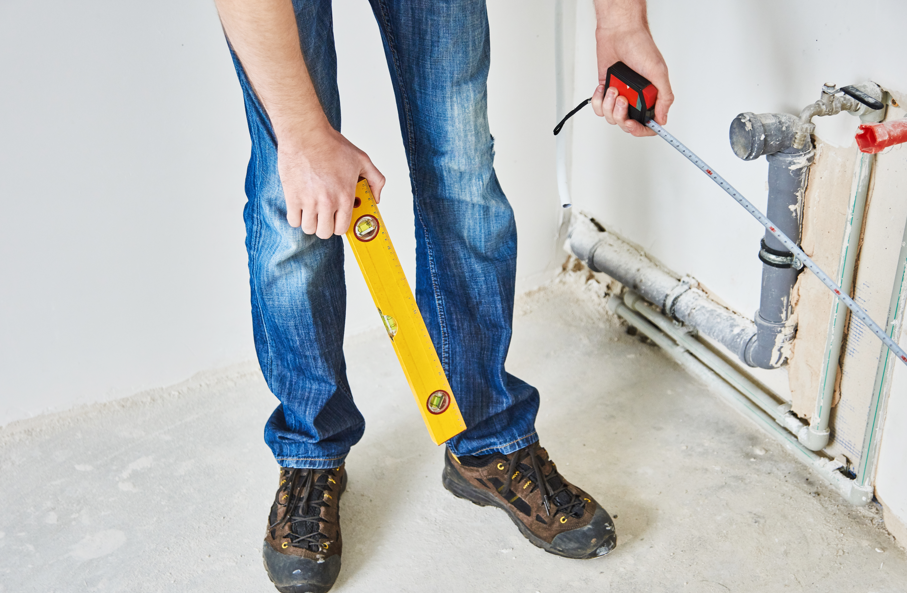Detecting a Water Leak: How to Spot, Stop, and Save Fast
- Staff Desk
- Jul 29
- 6 min read

Did you know a single undetected water leak can waste over 10,000 gallons of water per year? That’s the equivalent of 270+ loads of laundry—literally money going down the drain.
Water leaks can be silent destroyers. From hiking up your water bill to causing severe structural damage and hazardous mold growth, a hidden leak can become a full-blown nightmare—fast.
The good news? You can learn how to detect a water leak before it’s too late—and we’ll show you how.
This blog is your complete guide to detecting a water leak: where to check, what signs to look for, what tools you need, and when to call in the pros.
Why Detecting Water Leaks Early Is Critical
Water damage is the second-most common homeowner insurance claim, with the average claim costing over $11,000. But it’s not just about money.
A slow leak can lead to:
Mold infestations (which can cause severe health issues)
Structural weakening of floors, ceilings, and walls
Skyrocketing water bills
Electrical hazards
Urgency is key. The earlier you detect a leak, the easier—and cheaper—it is to fix.
Pro Tip: Even a minor drip can waste up to 3,000 gallons a year. Don’t ignore the signs.
Top 10 Warning Signs of a Water Leak
Think you might have a leak? Look for these red flags:
Unusually high water bills Sudden spikes in usage? Compare with previous months.
Damp, musty odors Hidden leaks often produce persistent mildew smells.
Water stains or discoloration Look for yellow or brown marks on ceilings and walls.
Mold or mildew Mold thrives in moist, hidden areas caused by leaks.
Warped or bubbling floors and walls Water damage can cause noticeable swelling or cracks.
Peeling paint or wallpaper Water behind walls breaks down adhesives.
Visible mold patchesEven small spots can signal a bigger problem.
Reduced water pressure A leak can reduce flow to fixtures.
Hearing water when no one is using it A constant trickling sound = a hidden leak.
Your water meter won’t stop running A meter that spins while all water is off = danger.
Where Water Leaks Commonly Happen

Knowing where to look can save you precious time:
1. Toilets
The flapper valve or fill valve often fails. Up to 30% of household water waste is due to toilet leaks.
2. Faucets and Fixtures
Dripping faucets can leak hundreds of gallons per year.
3. Water Heaters
Corrosion, pressure relief valves, and loose connections can cause puddles around the unit.
4. Behind Walls
Pipes that freeze, corrode, or burst often do so silently until there’s visible damage.
5. Under Sinks
Check for wet spots, mold, and water stains under cabinets.
6. Basements and Crawl Spaces
These hidden zones often harbor unnoticed seepage.
7. Irrigation Systems
Outdoor leaks often go undetected until landscaping suffers or your bill spikes.
How to Detect a Water Leak: 5 DIY Steps
Before calling a plumber, here’s what you can do:
Step 1: Monitor Your Water Bill
Track usage over 2-3 months. Spikes with no added use = potential leak.
Step 2: Check the Water Meter
Turn off all water.
Locate the meter (usually outside or in a basement).
If the dial moves—you’ve got a leak.
Step 3: Do a Toilet Dye Test
Add food coloring or a dye tablet to the toilet tank.
Wait 15 minutes.
If color appears in the bowl, you have a leak.
Step 4: Look for Visual Clues
Use a flashlight to check under sinks, around water heaters, and behind appliances.
Step 5: Use a Moisture Meter or Infrared Camera
They help spot hidden leaks in walls and floors.
Tools That Make Leak Detection Easy

Want to go beyond guesswork? These tools help:
Acoustic Listening Devices
These pinpoint leak locations via sound waves.
Moisture Meters
Handheld tools that measure moisture content in drywall, wood, and flooring.
Infrared Thermal Cameras
Reveals water temperature changes inside walls.
Smart Leak Detectors
Wi-Fi devices like Flo by Moen or Phyn Plus provide real-time leak alerts, auto-shutoff, and even usage analytics.
Water Pressure Gauges
Leaks often lower water pressure. Attach one to a hose bib to test.
When You Should Call a Professional
DIY is a great start—but don’t take risks when:
The leak is behind walls or ceilings
There’s visible mold growth
You hear water but can’t find the source
You suspect foundation or slab leaks
Your insurance company requires professional diagnostics
A licensed plumber uses specialized tools and can assess the damage quickly and accurately.
Urgency Tip: The longer you wait, the more you pay. Don’t let a $100 fix turn into a $10,000 disaster.
Proven Strategies to Prevent Future Leaks
An ounce of prevention is worth a pound of repair. Here’s how to stop leaks before they start:
1. Install Smart Leak Detectors
Preventative tools send alerts and shut off water automatically.
2. Regular Plumbing Inspections
Have a licensed plumber inspect annually, especially if your home is over 20 years old.
3. Replace Old Pipes
Galvanized steel and polybutylene pipes are prone to cracking and corrosion.
4. Insulate Exposed Pipes
Prevent freezing and bursting during winter months.
5. Avoid Chemical Drain Cleaners
They corrode pipes over time. Use enzyme-based cleaners instead.
6. Check Appliances Regularly
Replace washing machine hoses every 5 years. Inspect dishwashers and refrigerators quarterly.
7. Monitor Water Pressure
Excessive pressure (above 80 psi) stresses pipes. Install a pressure-reducing valve if needed.
Final Thoughts: Take Action Now Before It’s Too Late
Water leaks don’t wait—and neither should you. They start small but escalate quickly. By learning how to detect a water leak, you’re not just saving water; you’re protecting your home, your wallet, and your peace of mind.
Immediate Action Checklist:
Check your water bill and meter
Inspect toilets and under sinks
Conduct a dye test
Invest in smart leak detectors
Book a professional inspection if needed
Additional FAQs About Detecting a Water Leak
1. How can I tell if a leak is coming from my roof or plumbing?
A: Check the location and timing. Roof leaks often appear after rain and are typically near exterior walls or ceilings. Plumbing leaks may occur anytime and often produce dripping sounds or consistent water stains in localized areas.
2. What should I do immediately after finding a water leak?
A: Turn off the main water supply to prevent further damage, dry the affected area, and document the damage with photos. Then contact a plumber and your insurance company if necessary.
3. Can a slab leak cause foundation problems?
A: Yes. Slab leaks, which occur in the pipes beneath your concrete foundation, can cause cracking, shifting, and structural instability if not addressed quickly.
4. How often should I check for hidden water leaks in my home?
A: Ideally, perform a self-check every quarter and schedule a professional plumbing inspection once a year, especially in older homes or those with a history of leaks.
5. Are there signs of a leak that only appear at night or during quiet times?
A: Yes. At night, ambient noise is reduced, making it easier to hear dripping, hissing, or flowing sounds that indicate a hidden leak.
6. Can small leaks really cause mold or health issues?
A: Absolutely. Even a minor leak can lead to significant mold growth within 24–48 hours, triggering allergies, respiratory problems, and asthma symptoms.
7. Will a water leak affect my home’s resale value?
A: Yes. Leaks can lead to mold, structural damage, and stained surfaces—major red flags for buyers. A documented history of leaks can also impact your home inspection and selling price.
8. How do I find leaks in underground or outdoor pipes?
A: Look for wet patches in the yard, unusually green grass, or muddy soil even in dry weather. For confirmation, use a listening device or call a leak detection specialist.
9. Are smart water monitors worth the investment?
A: Definitely. They can detect leaks early, prevent catastrophic damage, reduce water waste, and may qualify you for home insurance discounts.
10. Is it safe to ignore a slow drip under the sink if it’s not causing damage?
A: No. Even slow drips cause long-term damage, waste water, and can worsen over time. It’s best to address them immediately before they lead to rot, mold, or a burst pipe.



Comments